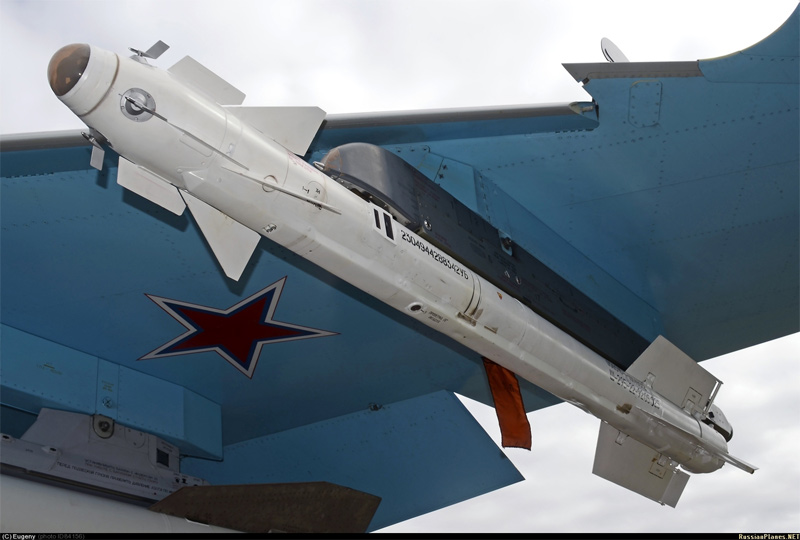Short-range air-to-air missile. The development of a highly maneuverable K-73 melee airborne missile - like the development of a K- 60 rocket - started by the Molniya Design Bureau (OKB- 4 MR Binovat) according to the Decree of the USSR Council of Ministers on July 26, 1974. Chief Designer - MR Bisnovat. According to the initial design, the rocket was created without taking into account the full range of the GOS and only with gas-dynamic control. I planned to use Probably a modified rocket of GOS the K-60 . After the choice of the all-perspective GOS "Mayak" of the Arsenal software development, a modern aerodynamic scheme with a change in the rocket dimensions was adopted at a meeting under the leadership of the Deputy Chief Designer of the rocket GPP Dementiev.This adjustment of the project probably took place in 1976. In 1977, after the death of MR
Since October 1978, the GOS was tested on an aircraft -flying laboratory based on the Tu- 124 - LL-124. Tests of simplified prototypes of K-73 missiles from ground-based launchers began in 1979. The work of the gas-dynamic control surfaces was tested. In the same 1979, within the framework of factory tests, 8 MiG-23ML missions (board No. 123) and three launches of K-73 missiles were performed. In 1980, for the first time, a MiG - 17 flying target was shot down from this MiG -23ML. In 1981, the third serial MiG-29 (No. 9-19) joined the tests - the MiG-21M target was shot down from it.
Since October 1978, the GOS was tested on an aircraft -flying laboratory based on the Tu- 124 - LL-124. Tests of simplified prototypes of K-73 missiles from ground-based launchers began in 1979. The work of the gas-dynamic control surfaces was tested. In the same 1979, within the framework of factory tests, 8 MiG-23ML missions (board No. 123) and three launches of K-73 missiles were performed. In 1980, for the first time, a MiG - 17 flying target was shot down from this MiG -23ML. In 1981, the third serial MiG-29 (No. 9-19) joined the tests - the MiG-21M target was shot down from it.
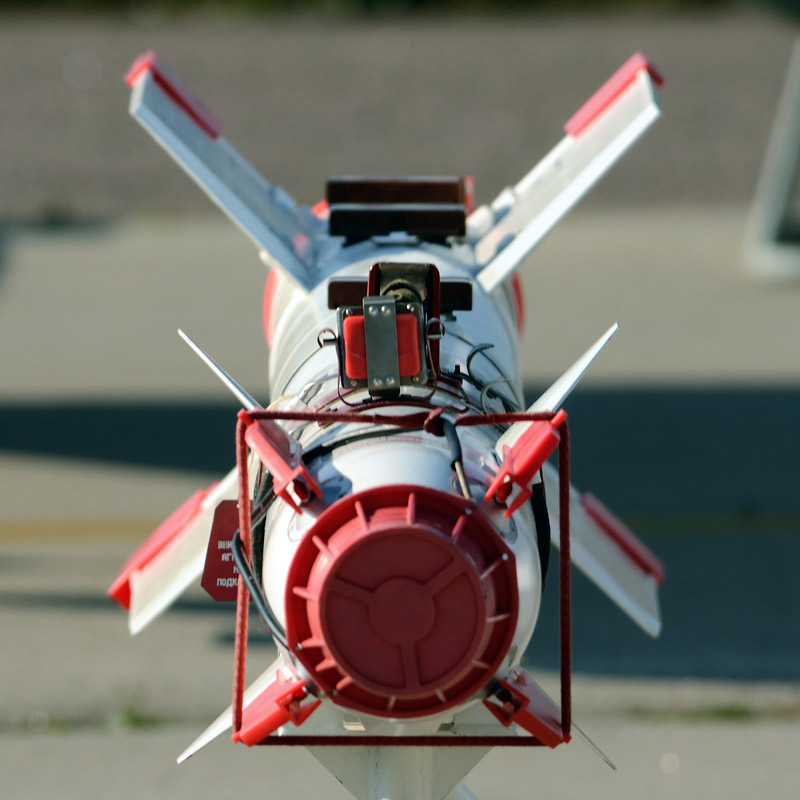
Educational-acting model of the R- 73L with an optical fuse. Exhibition of technology of The in Ramenskoye, the 100th anniversary of the Russian Air the Force, 12.08.2012 (photo The - of pfc-joker is, http://pfc-joker.livejournal.com ).

1981-1982 with In work on the Conditions creation of air-to-air Missiles, the which Were conducted by OKB Molniya, WAS Transferred to the Vympel OKB. Gennady Alexandrovich Sokolovsky (to 1994) was appointed Chief Designer. The missile was commissioned as R-73 by the Decree of the Council of Ministers of the USSR of June 22, 1984 and the order of the USSR Ministry of Defense No. 00113 (1984). The beginning of mass production (model P-73 MDR-1) - 1987. The model of rocket 73RMD P-2 has the ability to launch into the rear hemisphere of the carrier and can be used against air-to-air missiles. The chief designer of the rocket since 1994 - Yu.K.Zakharov.
Serial production of the R-73 missiles began in 1983 and until 1992 carried out by was the Tbilisi Aviation Plant (Tbilisi, Georgia), and at the Moscow Kommunar plant ( East - Tymchuk D.. A total of 6,000 rockets were manufactured in Tbilisi. In the 1990s, probably the production of missiles for export and, possibly, for the Russian Air Force was conducted by pilot production of the Vympel GosMDB. As of the end of the 1990s - the beginning of the 2000s, the repair and maintenance of the missiles is carried out by the 711th aircraft repair plant in the city of Borisoglebsk.
Launcher - missiles are launched from the P-72 (APU-73-1) and P- 72-1D (APU-73-1D) or P-72-1BD2 launchers. In the media of the 1990s, the Ka- 50 launcher, APU-62-1M, was also mentioned. Missiles are mounted on launchers using three tiers of yoke.
The RVV-MD rocket may be suspended under the P-72-1D (APU-73-1D) or P-72-1BD2 launchers.

Rocket R-73 :
Design - the rocket is made according to the aerodynamic "A duck" the scheme. Aerodynamic angle sensors (angle of attack and slip), destabilizers and aerodynamic control surfaces are located in the nose. In the tail - wing with ailerons. The rocket is also equipped with four- section gas-dynamic rudders.
In the technical specifications for the creation of an ultra-maneuverable rocket - with the possibility of reaching angles of attack of about 40 degrees - it was proposed to use gas -dynamic control due to the inefficiency of conventional rudders. The initial version of the rocket project did not provide for aerodynamic controls - only gas-dynamic.It was supposed to use wingless body with a tail stabilizer of 6 aerodynamic surfaces.
Has a rocket of The block composition (from the nose to the tail Quatnities):
1. of The first compartment is the GPS with the aerodynamic controls.
2. The second compartment - steering mice, autopilot and proximity fuze.
3. The third compartment is a gas generator .
4. The fourth compartment is a combat unit with internal PIM.
Fifth compartment 5. - Propellant solid rocket motor rocket
of The rocket old body is made of aluminum Alloys has, the solid rocket motor old body is steel. The connections of the compartments are bayonet, the connections of the extreme compartments are flanged. The fully assembled rocket is delivered to the troops in a germcoat and a wooden closure.
The combat training model of the R- 73L missile with an optical fuse under the Su- 34 bort No. 05 is red. Exhibition of technology in Pushkin, August 2012 (photo The - of Yevgeny Polivanov, http://russianes.net/id84156 ).
Steering machines work on the working body, which is produced by a solid gas generator. The working body enters the tail section through a special channel located outside the rocket body.

Educational split model of the R-73 rocket. From left to right: tail section with engine interceptors and aileron steering, third, second and first compartments. UEFA Training Aviation Personnel Lipetsk Military and the Test Center of the Russian of Ministry of Defense named is the after the VP Chkalov, 01.27.2012 (photo The - Vitaly Kuzmin's, http://vitalykuzmin.net ).
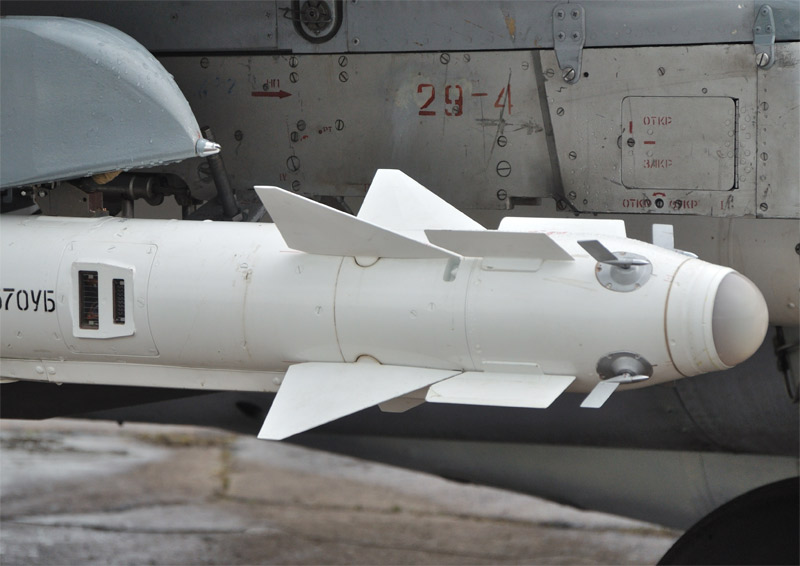
GOS and aerodynamic controls of a combat training missile R-73L. Of technology in Exhibition Exhibitions Pushkin, 02.06.2012 (photo The - of pfc-joker is, http://pfc-joker.livejournal.com ).
Guidance system and the Control - the missile control system includes an autopilot with roll Stabilization and an IK profile of GOS. The roll stabilization is carried out by mechanically connected ailerons.
At the stage of preliminary design of the K- 73 rocket, the use of the full- range IR GOS was not expected. The development of the GOS was carried out by the Kiev software company Arsenal (chief designer - AV Molody) on a competitive basis with the NPO Geofizika (Moscow). The Arsenal software was developed as a compact and all-view GSN Mayak / OGS MK- 80 (RMD-2). The Mayak also implemented new effective measures to combat natural and man-made interference. Along with the appropriate selection of the sensitivity range of the photodetector, a pulse-time modulation of the signal was used in the GOS equipment, a digital signal processing unit was introduced with several independent channels.Improve efficiency by the To Hitting the more vulnerable and by important elements of the target, aiming AT Been a point has an applied, Shifted forward relative is to the nozzle of the engine of the aircraft's target. The original version of the K-73 missile was redesigned for this hsn.
The homing head of the RMD-2 missile has increased noise immunity against IR countermeasures and is built on a digital element base, which makes it easy to reprogram tracking and interception algorithms. Improved ability to attack low-flying targets . It is with the RD-73 RMD-2 rocket that a maneuver is possible with launching a rocket into the rear hemisphere of the carrier and it is possible to attack enemy air-to-air missiles.
On the MiG-29 and Su-27 aircraft, the missiles can be used together with the slit of the target designation system, the Schel, which significantly increases the combat capabilities of the fighter.
In the 1990s, at the arms exhibitions, Vympel Design Bureau displayed footage of K-73 missile tests with a launch backwards - in order to defend strike aircraft and bombers.
| MK-80 / "Mayak" | RMD-1 / R-73E | RMD-2 / P-73m / RVV-MD | ||
| type GOS | vserakursny | vserakursny with cooled sensor | vserakursny, mnogoploschadochnaya cooled with dual-band photodetector, the sensitivity is increased by 2 times | |
| developer | NGO "Geophysics" (Moscow) | ON "Arsenal" (Kiev) | presumably - GOS MK-80 "Lighthouse" development and production "Arsenal" (Kiev) | |
| Angles targeting of bearing | sector 90 deg | sector 120 degrees (180 degrees - after start-up) | sector 90 deg | sector 120 degrees (180 degrees - after start-up) |
| Angle pumping girokoordinatora | + -75 degrees | + -75 degrees ?? | + -75 degrees | |
| The angular speed tracking | to 60 deg / s |
Engine - Singlemode SRM with gas-dynamic rudders, spoilers (to ensure high maneuverability)
Link - 785 kg ( ist -. Controlled )
Link - 785 kg ( ist -. Controlled )
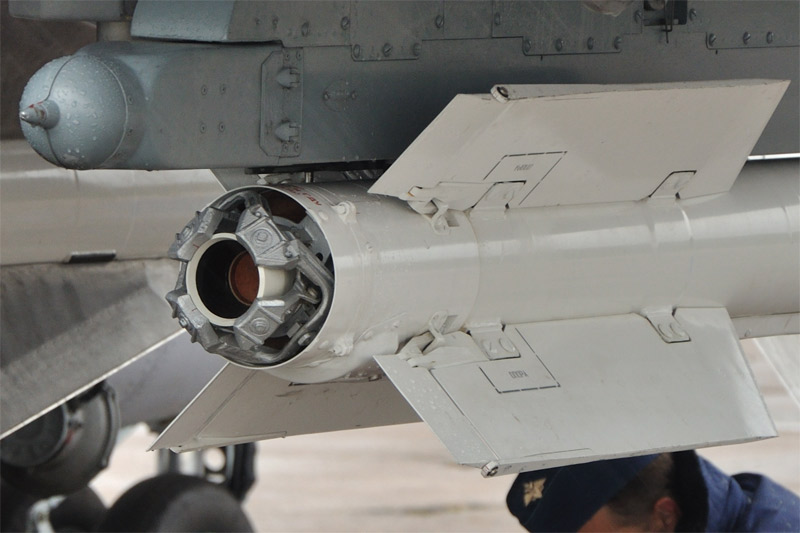
Gas-dynamic controls and ailerons training and combat missile R-73L. Art exhibition at the Pushkin, 02.06.2012 (photo - of pfc-joker is, http://pfc-joker.livejournal.com ).
It was a rotary nozzle that showed up to 3% (spoilers) to 3%.
TTX missiles :
| P-73 MDR-1 / F-73E | P-73 2-ECD | P-73m / RVV-MD | K-74ME | |
| Length | 2900 mm | 2900 mm | 2900 mm | 2900 mm |
| housing diameter | 170 mm | 170 mm | 170 mm | 170 mm |
| Wingspan | 510 mm | 510 mm | 510 mm | 510 mm |
| The scope of aerodynamic control surfaces | 380 mm | 380 mm | 380 mm | 380 mm |
| Weight | 105 kg | 110 kg | 110 kg according 1990s 106 kg of a later data | 105 kg |
| Weight warhead | 8 kg | 7.3 kg | 8 kg | 8 kg |
| Range of action | 0.3-21-30 km | 0.3-40 km | 0.3-40 km | 0.3-40 km |
| Target height flight | 20-20000 m | 5-20000 meters | 20-20000 m | 20-20000 m |
| Maximum Overload goals | 12 G | 12 G | 12 G | 12 G |
Heightsphere speed - 12 km
Maximum excess goal - 12000 m
speed targets maximum - 2500 km / h
Maximum overload goal - 12 G
The maximum goal is 60% of the
maximum operating overload - 40 G
Type of warhead - rod, PIM is located inside the warhead.
Submunitions - uranium rods
Explosive - 2.45 kg
Fuses - noncontact:
- radar (in most cases), "Merlin" ( ist - Tymchuk D. ) ;
- optical laser (R-73L, P-73EL) "Amber" ( ist - Tymchuk D. ) .
The radius of destruction warhead - 3.5 m
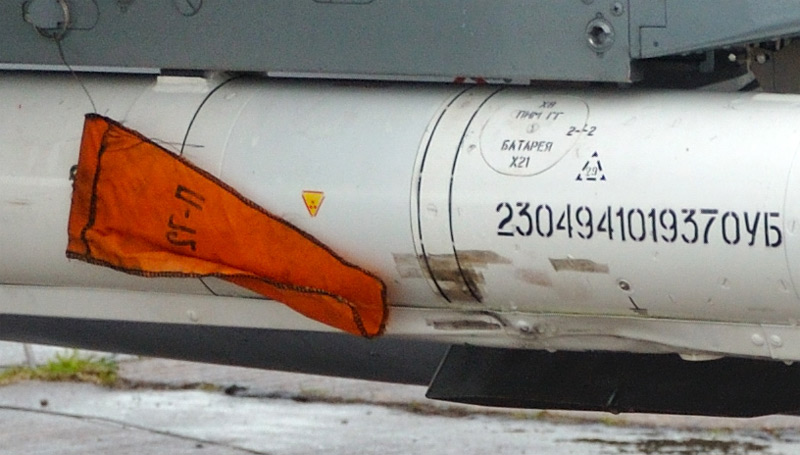
Yellow icon (uranium rods) combat training R-73L. Art exhibition at the Pushkin, 02.06.2012 (photo - of pfc-joker is, http://pfc-joker.livejournal.com ).
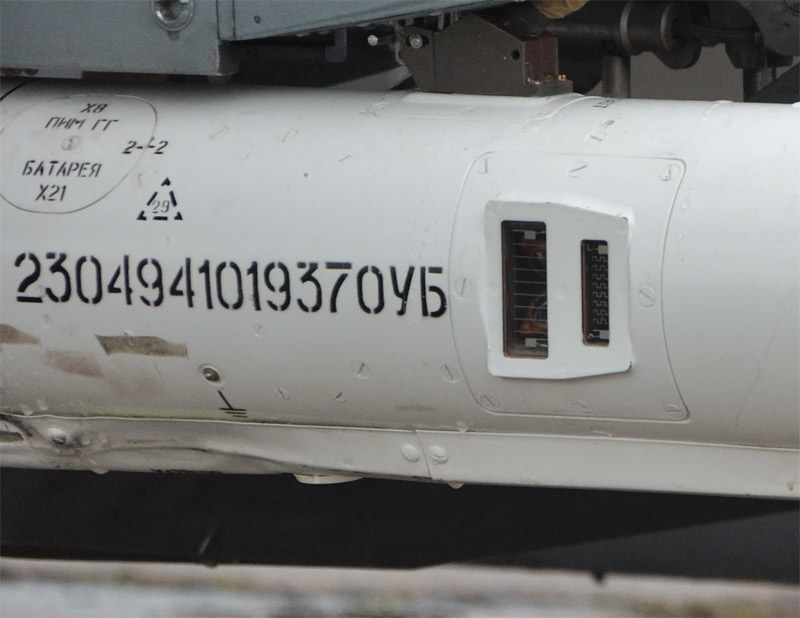
Window optical laser blaster "Amber" combat training missile R-73L. Art exhibition at the Pushkin, 02.06.2012 (photo - of pfc-joker is, http://pfc-joker.livejournal.com ).


R-73 with radio and optical fuze (foreground)
under the Su-27 (an exhibition in Moscow, August 1989).
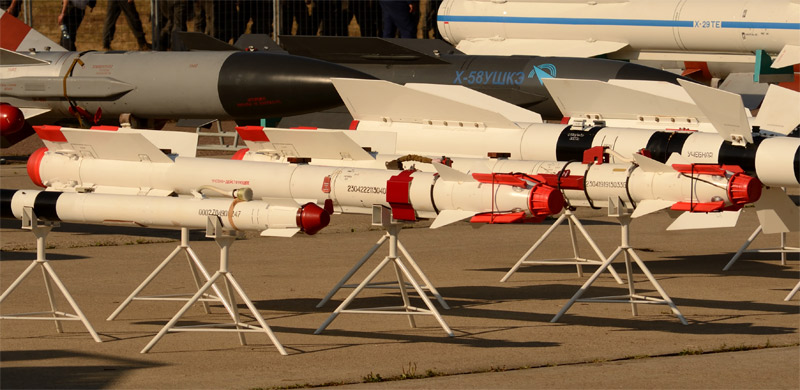
Educational-acting samples of R-73L optical fuze and P-72 with radio. Art exhibition in Ramenskoye, the 100th anniversary of the Russian Air Force, 12.08.2012 (photo - of pfc-joker is, http://pfc-joker.livejournal.com ).

Educational-acting samples of R-73L optical fuze and P-72 with radio. Art exhibition in Ramenskoye, the 100th anniversary of the Russian Air Force, 12.08.2012 (photo - of pfc-joker is, http://pfc-joker.livejournal.com ).
Modifications :
- K-73 (preliminary design) - the initial version of the K- 73 was performed as a super-maneuverable missile without aerodynamic controls. GSN - either the development of NPO " Geophysics" or software "Arsenal" (GSN "Mayak").
- K-73 - the final draft of the rocket, the prototype of the serial version. Tests - since 1979
- R-73 / R-73 MDR-1 - the name of the rocket after its adoption by Decree of 06.22.1984 - the first production version of the rocket. Probably, the RMD-1 is the symbol of the R-72 rocket with the first version of the control system and the GOS.
Projections of the R-73 rocket - AA-11 ARCHER

Projections of the R-73 rocket RDM -1 - AA-11 ARCHER (figure AV Karpenko, 2000, http://bastion-karpenko.narod.ru ).
Projections of the R-73 rocket RDM -1 - AA-11 ARCHER (figure AV Karpenko, 2000, http://bastion-karpenko.narod.ru ).
- K-73E - the export version of the rocket, analogue of the R-73RMD-1 rocket, has been exported since 1988 (GDR).
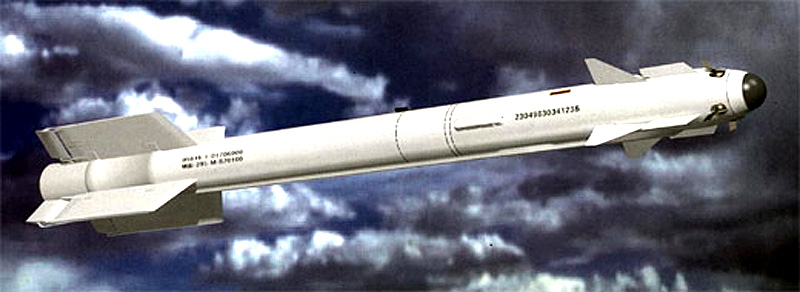
73E-R Rocket ( drawing ICB "Vympel").
- R-73L / R-73EL - an export version of the rocket with an optical laser contactless fuse was first shown at the MAKS- 1999 air show, but in fact the rocket with an optical fuse (without announcement) was first shown in August in 1989 at the first Moscow air show. The rocket is equipped with an optical laser fuse.
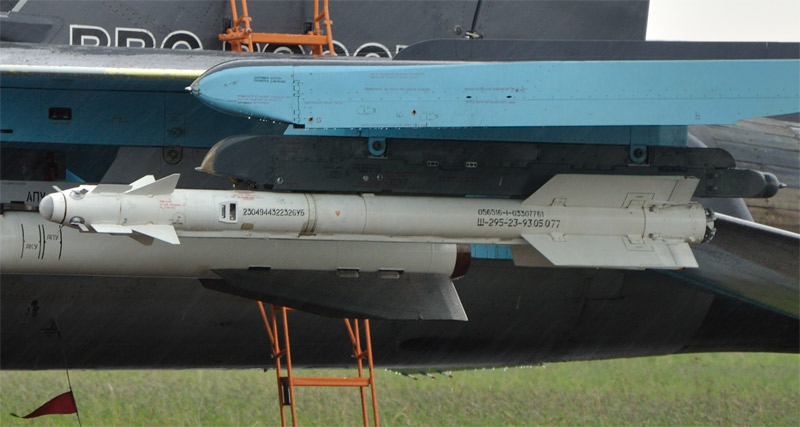
Combat training sample R-73L optical fuse. Art exhibition at the Pushkin, 02.06.2012 (photo - of pfc-joker is, http://pfc-joker.livejournal.com).
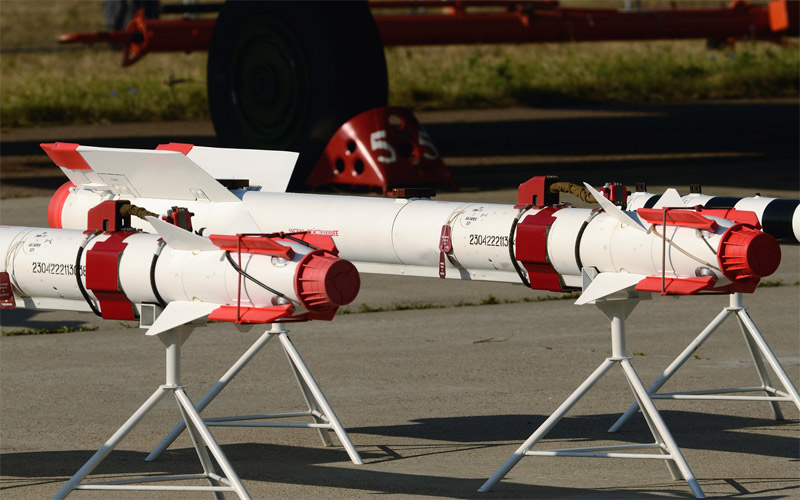
Educational-working model P-73L missiles with an optical fuse. Art exhibition in Ramenskoye, the 100th anniversary of the Russian Air Force, 12.08.2012 (photo - of pfc-joker is, http://pfc-joker.livejournal.com ).
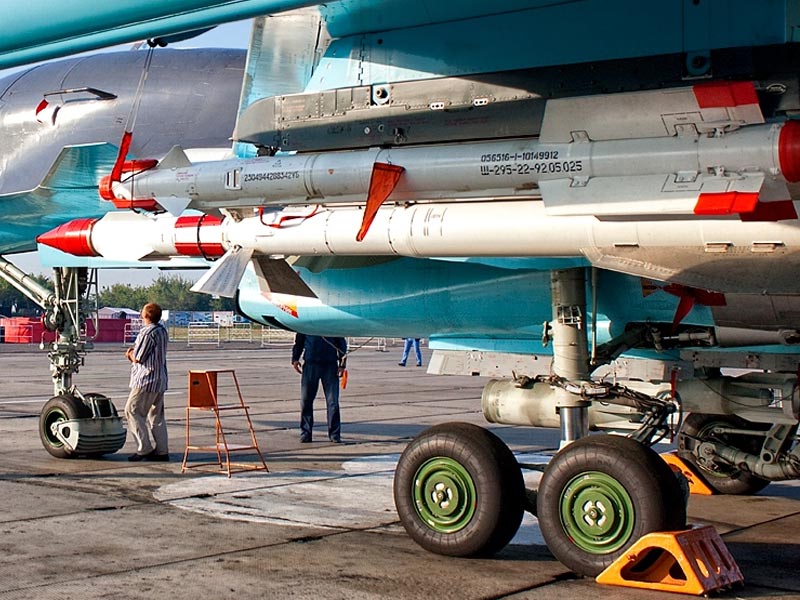
Combat training sample R-73L optical fuse. Su-34 board No. 05 red airbase Baltimore / Voronezh, 08/18/2012 (photo - Sergey Tchaikovsky, http://russianplanes.net/id84363 ).
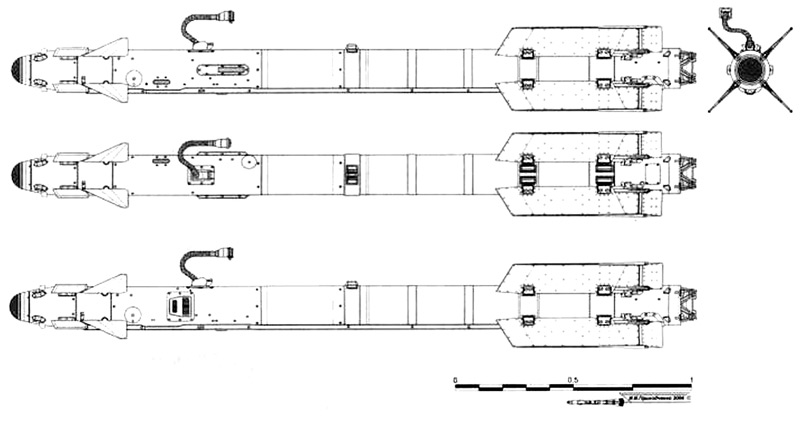
Projection of R-73 - P-73 radar fuze side and top views, P-73L with optical laser fuse is a side view (Figures IVPrihodchenko 2006, http://vadimvswar.narod.ru ).
- R-73m / F-73 MDR-2 - a variant of the rocket with improved performance characteristics and a new homing vessel (with the characteristics of the GOS Mayak), was first shown at the MAKS- 1997 airshow. According to the data from the exhibition - rocket tests started at the end of 1994, the rocket is ready for mass production . In general, the creation of the K - 73 modification with an extended defeat zone was initiated by the decision of the military-industrial complex under the USSR Council of Ministers on February 13, 1984. Later, the work on the rocket was set by the Resolution of the USSR Council of Ministers on December 28, 1984 In 1988-1989. made the first 16 prototypes of new missiles.The model of the R-73 RMD-2 rocket has the ability to launch into the rear hemisphere of the carrier and can be used against air-to-air missiles.
- K-74ME - export version of the R-73M, probably with a simplified guidance system. First shown at the air show MAKS-1997.
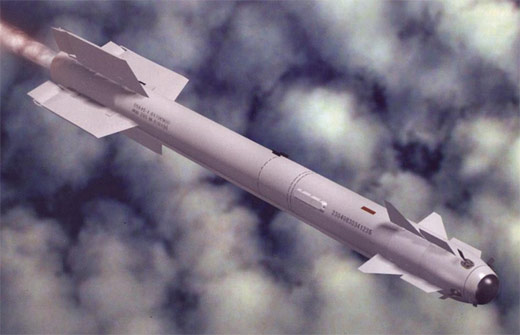
Rocket R-74ME (drawing ICB "Vympel").
- R-73K - the name of the R- 73 missiles with a radar proximity fuse. The name is sometimes used.
- RVV-MD - probably the updated version of the R-73M / R- 73 missile RDM-2. Developed by GosMKB "Vympel" in the late 1990s - early 2000s. The version of the RVV-MDL rocket is equipped with an optical laser non-contact fuse. The name RVV-MD was first mentioned in the annual report of GosMCB Vympel in 2007. And for the first time, the model of the rocket was shown to the public at the MAKS- 2009 air show. Some sources indicate that the version of the rocket was created as the "second stage of modernization" of the R- 73 rocket.
- UZR-73 - teaching and recording with a recorder - rocket simulator, used for training purposes.
- R-73UT - training missile R - 73.
- B-72 - overall mass model of the R-73 rocket.
- "R-73UB" (conditional name) - training and combat version of the missile, equipped with a real warhead and onboard systems.
- "R-73UD" (conditional name) - a training version of the missile, without a warhead and possibly without an engine, but with onboard systems.
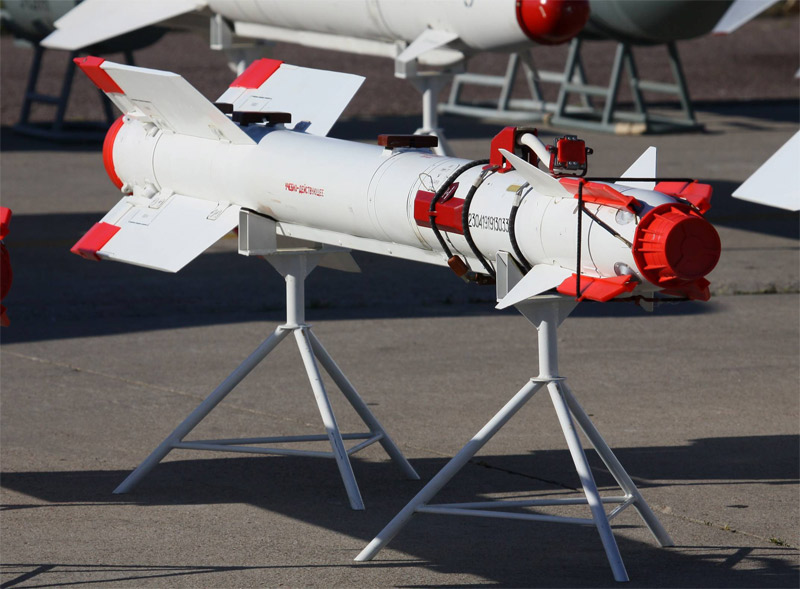
Educational-acting model of the R-73 rocket with a radio fuse. Exhibition of technology of The in Ramenskoye, the 100th anniversary of the Russian Air the Force, 12.08.2012 (photo The - Evgeny Erokhin, http://missilesgo.co.uk ).
- K-74M2 - modification of the R- 73 rocket to arm the PAK FA. 23.05.2014 at the exhibition of arms "Kadeks - 2014" in Astana, the head of Tactical Missiles Corporation Obnosov Boris said that the latest model of the "X-74m2" missiles for arming fighter PAK FA will appear by 2016
Media :
Aircraft:
- Su-27K / Su-33
- Il-102
- Yak-141
- the MiG-23MLD / the MiG-23-98
- Su-30
- Su-35
- J-10 (China)
- Mirage F1CZ (South Africa)
- Tejas (India)

The R-73 missiles on the far underwing pylons under the MiG- 29, mid-late 1980s (photo from the archive Cabal, http://militaryphotos.net ).
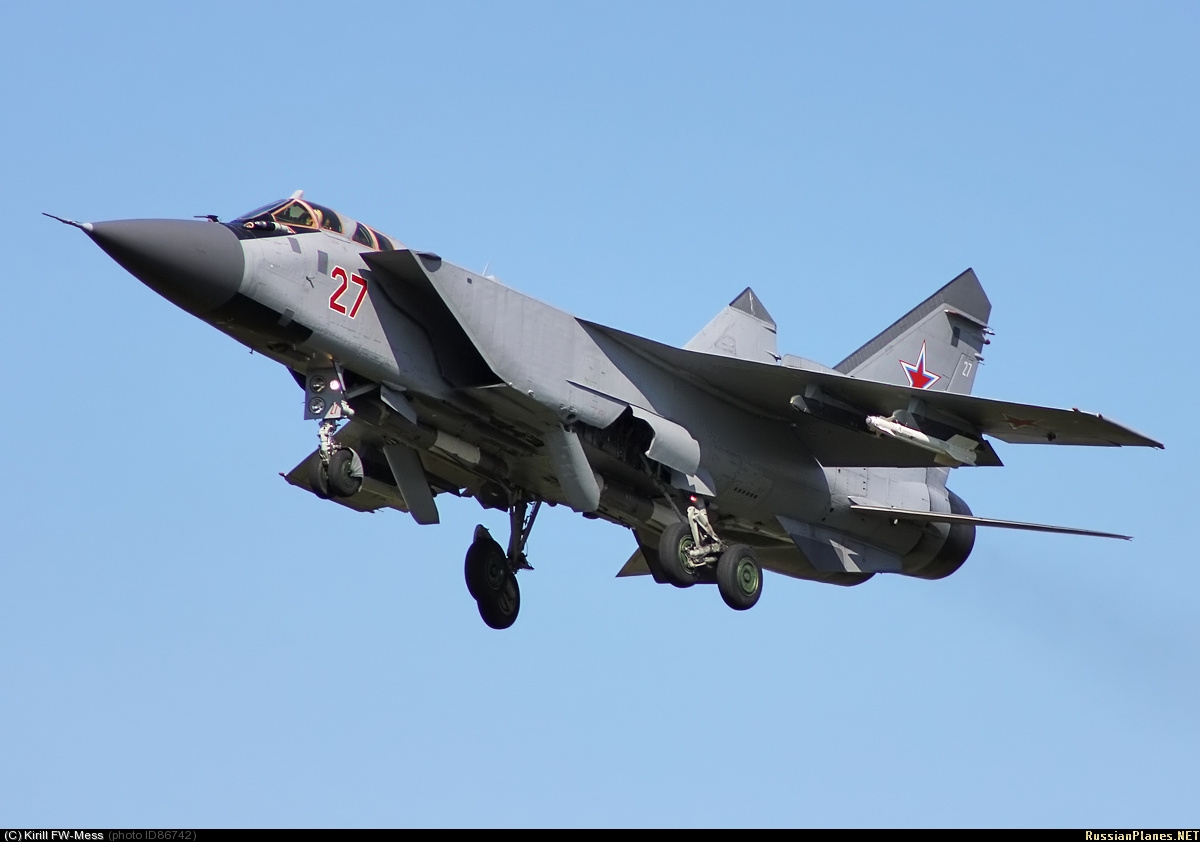
MiG-31BM board number 27 red with two missiles R-33 under the fuselage and two R-73 under the wing, August 2012 (photo - Kirill M, http://russianplanes.net/id86742 )

Missiles R-73E fighter Tejas, india ( http://expertshere.wordpress.com ).
Helicopters:
- Mi-24 - Work was done on the use of K- 73 missiles from Mi-24 helicopters.
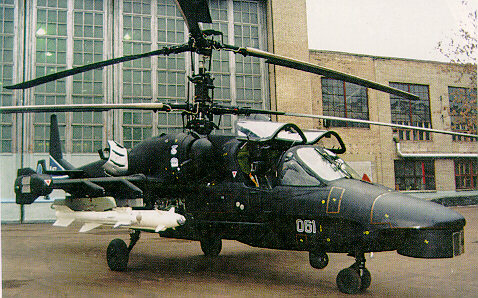


R-73 (left) under the prototype Ka-52
The Status : Russia
- in 2013 - is in service.
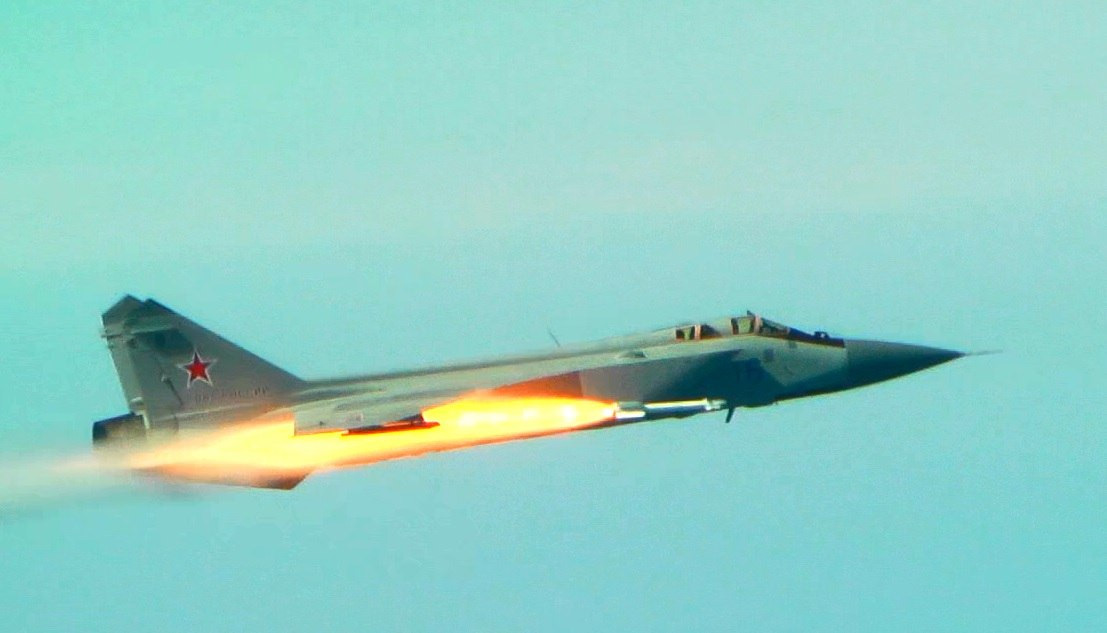
The launch of the R-73 rocket with the MiG-31BM board No. 16 blue from the Monchegorsk airbase, published in July 2013 ( source via http://djoker-lj.livejournal.com )
Export :
Algeria- 1999 - along with the missile R-23 delivered 289 missiles from Ukraine ( East - R-77. ).
- 1999-2010 gg - delivered 305 missiles.
Bangladesh - up to 2010 took place the delivery of missiles.
Bulgaria - up to 2010 took place the delivery of missiles.
Hungary - up to 2010 took place the delivery of missiles.
Vietnam - until 2010 there were deliveries of missiles.
GDR / Germany - for the MiG-29 aircraft. Later, the P-73 missiles were exported to third countries.
Egypt - up to 2010 took place missile delivery (Western data ??).
India
- 1996 - is already in service.
- 1999 - R-73E missiles with upgraded standard MiG-21-93 with radar equipment "Javelin" Indian Air Force aircraft.
- 1999-2010 gg - delivered about 450 missiles.
- 2010 November - R-73 fighter Tejas. Hans in the state of Goa. "The One of the main Problems view of the current stage of tests WAS to the Determine the zone Boundaries
start of the R-73 when used with supersonic fighter" Thejas " - specified in DRDO.
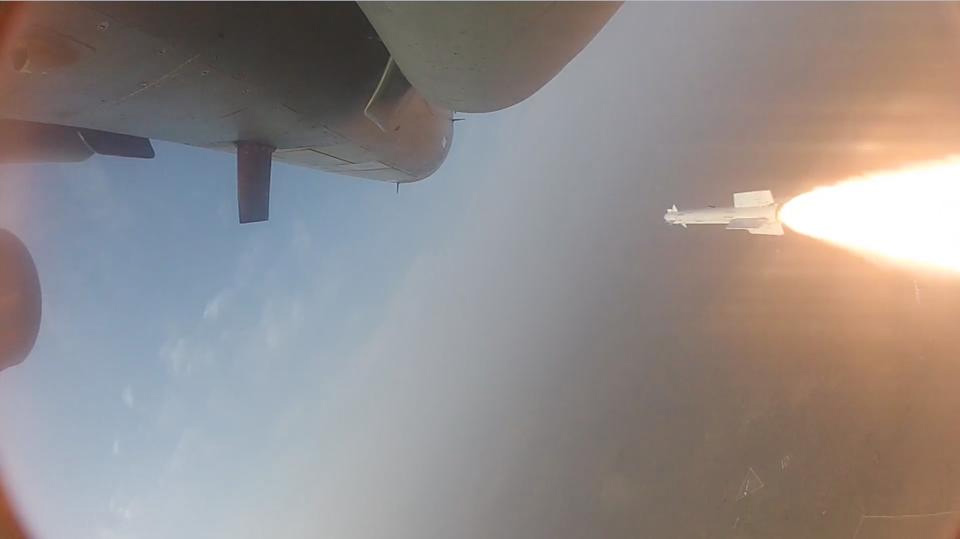
Iraq - before 2000, the first shipments of missiles were made .
Iran - until 2010 there were shipments of missiles.
Italy
- 1999-2010 - 8 rockets delivered.
Algeria- 1999 - along with the missile R-23 delivered 289 missiles from Ukraine ( East - R-77. ).
- 1999-2010 gg - delivered 305 missiles.
Bangladesh - up to 2010 took place the delivery of missiles.
Bulgaria - up to 2010 took place the delivery of missiles.
Hungary - up to 2010 took place the delivery of missiles.
Vietnam - until 2010 there were deliveries of missiles.
GDR / Germany - for the MiG-29 aircraft. Later, the P-73 missiles were exported to third countries.
Egypt - up to 2010 took place missile delivery (Western data ??).
India
- 1996 - is already in service.
- 1999 - R-73E missiles with upgraded standard MiG-21-93 with radar equipment "Javelin" Indian Air Force aircraft.
- 1999-2010 gg - delivered about 450 missiles.
- 2010 November - R-73 fighter Tejas. Hans in the state of Goa. "The One of the main Problems view of the current stage of tests WAS to the Determine the zone Boundaries
start of the R-73 when used with supersonic fighter" Thejas " - specified in DRDO.

Launch of the R-73 from the Tejas rocket fighter of the Indian Air Force, Goa, 12/07/2013 ( www.livefistdefence.com ).
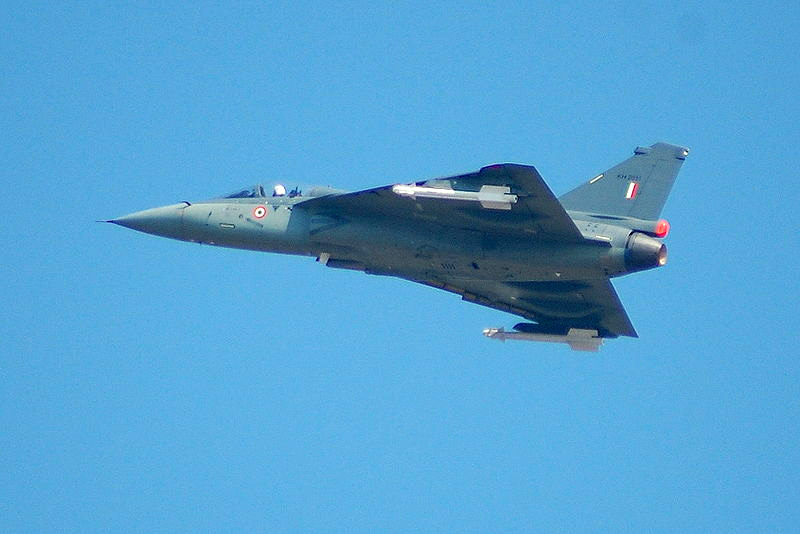
R-73 rockets or their models under the Tejas, India fighter. Photo no later than April 2010 ( http://www.indiandefence.com ).

R-73 rockets or their models under the Tejas, India fighter. Photo no later than April 2010 ( http://www.indiandefence.com ).
Iraq - before 2000, the first shipments of missiles were made .
Iran - until 2010 there were shipments of missiles.
Italy
- 1999-2010 - 8 rockets delivered.
Kazakhstan:
- 1992 - is in service.
- 1999 - together with the R-24 and X-29 missiles, 11 were delivered from missiles Ukraine ( source - the R-77 missile ).
China - until, in 2010 there were shipments of missiles.
North Korea - until 2010 there were shipments of missiles.
Cuba - by 1996 is in service.
- February 24, 1996 - an interceptor of the MiG-29UB Cuban air force with two R- 73 missiles shot down two Cessna 337 planes of the organization of anti-Cuban activists Brothers to the Rescue.
Peru - until 2010 there were shipments of missiles.
Poland - until 2010 there were shipments of missiles.
Serbia - until 2010 there were shipments of missiles.
Syria - until 2000, the first shipments of missiles were made .
Slovakia - until 2010 there were shipments of missiles.
Ukraine ( deliveries of R-73 to third countries missiles were carried out ):- 1999 - together with the R-23 missiles, 289 Were Delivered to rockets Algeria ( -source - the the R-77 missile ).
- 1999 - together with the R-24 and X-29 missiles, 11 were delivered to missiles Kazakhstan ( source - R-77 missile ).
- 2003 - according to the -source, the expiration date of the engines of the the R-73 missiles of the Ukrainian Air Force expired.
Eritrea:
- 1999-2010 - Delivered AT Least 5 missiles.
Ethiopia - until 2010 there were shipments of missiles.
Africa South:
- 2001 - Vimpel GosMCB has embarked on a new direction in the work - experimental design work on the integration of missiles on foreign-made aircraft. The integration of the R-73E rocket into the aircraft of the South African Air Force "Mirage F1" was shown at the Moscow Aviation and Space Salon MAKS- 2001.
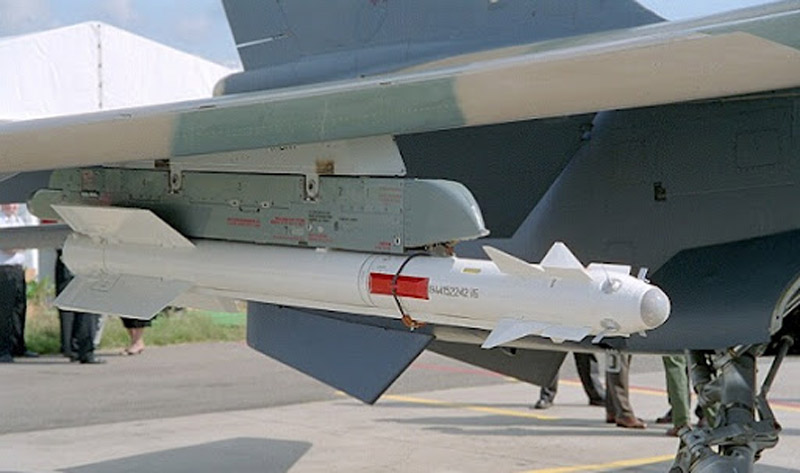
The R-73E missile under the Mirage F1CZ aircraft of the South African Air Force, MAKS- 2001 show air ( http://bayourenaissanceman.blogspot.com ).
Yugoslavia - the first deliveries were made before 1993.
Sources:
Exhibition on Khodynka Aviation (Moscow) in August 1989.Angelic R., V. Korovin Domestic air-to-air missiles guided // Technique and armament. No. 9/2005 .
Bakursky V., Ilyin V., Persian Gulf : War in the Air. // Wings of the Motherland NN 7,
9/1991 Bolshakov L., Andryushkov A., S. Fedotov, MiG-21: long-lived. // A red star. 01/19/1993.
Velovich A., MiG-29M - a familiar stranger. // Aviation and cosmonautics. Of N
2/1993 E. Gordon, "Heavy" "MiGs". // Wings of the Motherland. N
9/1992. GosNIIAS. Express information. №48 / 2010,
A. The Dmitriev, of Prospects for military aviation.// Independent military review. No. 22/1997.
Ilyin V., "The English Hound" with red stars. // Wings of the motherland. N 2-3 / 1993.
Ilyin, the Su-35 - the latest news. // equipment and weapons. N 1/1995
Karpenka AV Rocket short-range R-73. // Bastion. No.
2/2000 Wings of the Motherland, NN 3.4 / 1988
Kuznetsov, under the range of screws. // Wings homeland. N 3 / 1993.
Levin M., Magnificent Seven. // Wings homeland. N 3 / 1993.
Levin M., New humpback. // Wings homeland. N 12/1992,
Levin M., albeit forgotten. // Wings homeland. N 1-2 / 1993.
Markowski V. Perov, K., find the target missile. // Wings of the Motherland. N 9/1995
Claus V., Su-35: Fighter of the next century.// A red star. 09/08/1992.
S. Frost, Ka-50, "Werewolf" goes hunting. // Aviation Review. N 3/1993
Claus C., made in the Soviet Union. // Avio. No. 5/1996.
Museum of the USSR Armed Forces (March 1988).
There is even an electric stove on the Su- 35. // News intelligence and counterintelligence. 9-10 N / 1994.
Nikiforov A., Under the wing of the aircraft. // Airplane. N 3 / 1993.
Nikiforov A. The, That is Necessary! // Airplane. N 2/1993.
Nikiforov A., Fedot, but not that . // Airplane. N 4/93.
OJSC Corporation Tactical Missile Weapons. Website http://www.ktrv.ru , 2012
Pstygo I., Tests. // Wings of the motherland. N 2 / 1993.
R-73. Site "Corner of the by sky", http://airwar.ru , 2004
R-73.Website http://en.wikipedia.org , 2012.
R-77 rocket (CPCP), 2012 ( source ).
Russian missiles 1943-1993, edition of "PEAK", St. Petersburg, 1993, the
Soviet Armed Forces, 1988 (Tomsk)
Su - triplane. // Wings homeland. N 3/1994
fleet technique. N 2 / 1990.
Equipment and weapons, N 3/1989
Tymchuk D. Ukrainian potential - Russia's military might? Site "Fleet in 2017". 2010 ( source ).
Guided missile short-range R-73. Website http://rbase.new-factoria.ru , 2012
TsAGI. News foreign science and technology. Series: aviation and rocketry. Technical information. 3-4 N / 1989.
ATOM (Czechoslovakia), N 5/1988
Enciclopaedia of modern aircraft armament. (UK), 1988
Flieger Revue (the former German Democratic Republic), NN 2,3 / 1989
Interavia (Switzerland) NN
9/1988, 10/1989 Jonic publications, 1988, 1989
Letectvi + Kosmonautika (Czech-Slovakia), N 6/89
US News & World Report (USA), N
18/1989 Worlds armament and disarmament, SIPRI yearbook (Sweden), 1975, 1976, 1977, 1979, 1981
Bakursky V., Ilyin V., Persian Gulf : War in the Air. // Wings of the Motherland NN 7,
9/1991 Bolshakov L., Andryushkov A., S. Fedotov, MiG-21: long-lived. // A red star. 01/19/1993.
Velovich A., MiG-29M - a familiar stranger. // Aviation and cosmonautics. Of N
2/1993 E. Gordon, "Heavy" "MiGs". // Wings of the Motherland. N
9/1992. GosNIIAS. Express information. №48 / 2010,
A. The Dmitriev, of Prospects for military aviation.// Independent military review. No. 22/1997.
Ilyin V., "The English Hound" with red stars. // Wings of the motherland. N 2-3 / 1993.
Ilyin, the Su-35 - the latest news. // equipment and weapons. N 1/1995
Karpenka AV Rocket short-range R-73. // Bastion. No.
2/2000 Wings of the Motherland, NN 3.4 / 1988
Kuznetsov, under the range of screws. // Wings homeland. N 3 / 1993.
Levin M., Magnificent Seven. // Wings homeland. N 3 / 1993.
Levin M., New humpback. // Wings homeland. N 12/1992,
Levin M., albeit forgotten. // Wings homeland. N 1-2 / 1993.
Markowski V. Perov, K., find the target missile. // Wings of the Motherland. N 9/1995
Claus V., Su-35: Fighter of the next century.// A red star. 09/08/1992.
S. Frost, Ka-50, "Werewolf" goes hunting. // Aviation Review. N 3/1993
Claus C., made in the Soviet Union. // Avio. No. 5/1996.
Museum of the USSR Armed Forces (March 1988).
There is even an electric stove on the Su- 35. // News intelligence and counterintelligence. 9-10 N / 1994.
Nikiforov A., Under the wing of the aircraft. // Airplane. N 3 / 1993.
Nikiforov A. The, That is Necessary! // Airplane. N 2/1993.
Nikiforov A., Fedot, but not that . // Airplane. N 4/93.
OJSC Corporation Tactical Missile Weapons. Website http://www.ktrv.ru , 2012
Pstygo I., Tests. // Wings of the motherland. N 2 / 1993.
R-73. Site "Corner of the by sky", http://airwar.ru , 2004
R-73.Website http://en.wikipedia.org , 2012.
R-77 rocket (CPCP), 2012 ( source ).
Russian missiles 1943-1993, edition of "PEAK", St. Petersburg, 1993, the
Soviet Armed Forces, 1988 (Tomsk)
Su - triplane. // Wings homeland. N 3/1994
fleet technique. N 2 / 1990.
Equipment and weapons, N 3/1989
Tymchuk D. Ukrainian potential - Russia's military might? Site "Fleet in 2017". 2010 ( source ).
Guided missile short-range R-73. Website http://rbase.new-factoria.ru , 2012
TsAGI. News foreign science and technology. Series: aviation and rocketry. Technical information. 3-4 N / 1989.
ATOM (Czechoslovakia), N 5/1988
Enciclopaedia of modern aircraft armament. (UK), 1988
Flieger Revue (the former German Democratic Republic), NN 2,3 / 1989
Interavia (Switzerland) NN
9/1988, 10/1989 Jonic publications, 1988, 1989
Letectvi + Kosmonautika (Czech-Slovakia), N 6/89
US News & World Report (USA), N
18/1989 Worlds armament and disarmament, SIPRI yearbook (Sweden), 1975, 1976, 1977, 1979, 1981
